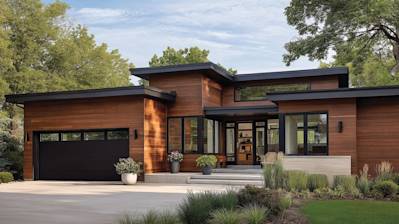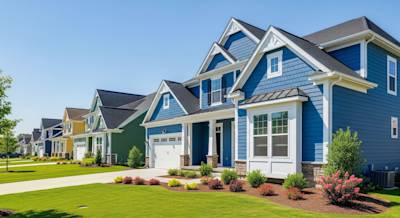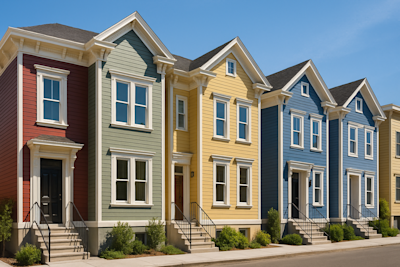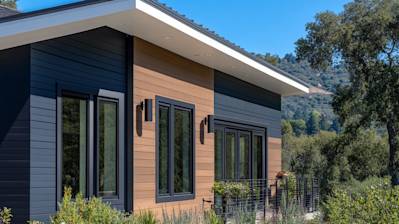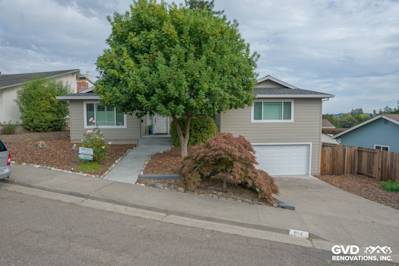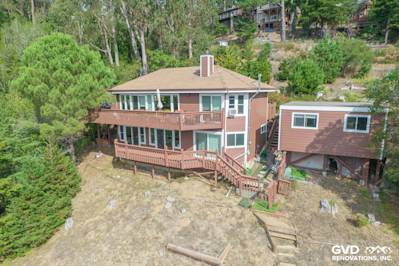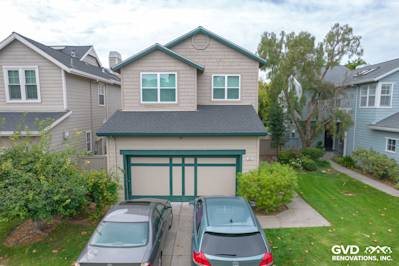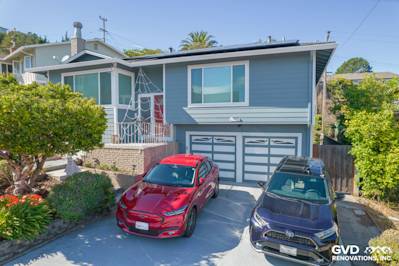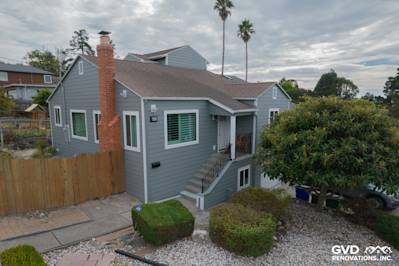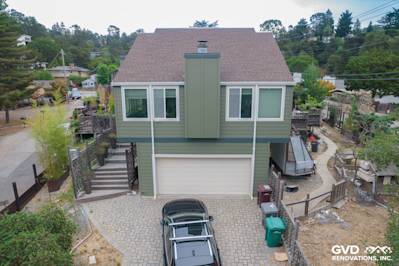Zip Sheathing, also known as ZIP System, is an innovative panelized sheathing system designed to add a new level of reliability, efficiency, and durability to your construction projects. Created by the building technology experts at Huber Engineered Woods, this system has revolutionized home and building construction.
In this comprehensive guide, we delve deep into the world of Zip Sheathing, sharing purpose, installation process, benefits, and why it's such a hit with builders and homeowners alike.
What Exactly is Zip Sheathing?
Zip Sheathing is a structural panel with an integrated water-resistive and air barrier. It is typically used to construct walls and roofs in residential and light commercial buildings. These panels consist of an oriented strand board (OSB) with a special protective layer on one side.
The key components of Zip Sheathing include:
- A layer of engineered wood panel
- A thin layer of water-resistive barrier
- A protective skin of acrylic-impregnated material
The all-in-one design makes it a cost-effective and time-saving solution compared to traditional sheathing that requires independent installation of house wrap or felt paper.
Installing Zip Sheathing: A Step-by-Step Guide
Here's a general procedure to install Zip Sheathing.
Step 1: Measure and Cut
Start by measuring the wall or roof where you'll install Zip Sheathing, and cut panels to fit.
Step 2: Align and Fasten
Next, align the sheathing with the studs or rafters of the wall or roof structure. Use a pneumatic nailer or hammer to drive nails every 6-12 inches along the edges of the panels.
Step 3: Tape the Seams
After the panels have been fastened, apply Zip System tape over the panel seams. The use of a roller ensures a tight seal.
After successfully installing Zip Sheathing onto the building structure, it protects from moisture entering the building, while still allowing the underlying materials to breathe.
Benefits of Zip Sheathing
When it comes down to enhancing the performance and durability of your construction project, Zip Sheathing is an excellent choice.
Here are the key benefits:
Integrated Water-Resistive Barrier: The unique design eliminates the need for house wrap, providing better water and air leakage protection.
Seamless Installation Process: Zip Sheathing saves time and labor costs as it can be installed with basic tools and doesn't require special skills.
Durability: The panels are engineered to withstand even harsh weather conditions.
Improved Energy Efficiency: This material offers low air leakages, helping to improve the energy efficiency of the building.
Cost-Effective: Less labor-intensive means you can save on installation costs.
The Popularity of Zip Sheathing Among Builders
Zip Sheathing's popularity among builders and contractors is largely due to its time-saving installation process and its effectiveness at enhancing a building's durability and efficiency. It's perfect for tight construction schedules and weather-prone regions, making it a top choice in today's construction industry.

Frequently Asked Questions about Zip Sheathing
How is Zip Sheathing Installed?
Zip Sheathing panels are installed with the use of a pneumatic nail gun or a hammer. Standard nails or screws can be used. Once the panels are securely fastened to the studs, the seams where the panels meet are then sealed using a self-adhesive zip system tape. This sealing tape helps create an airtight and watertight building envelope.
What is the Difference between Zip System Sheathing and Traditional Sheathing?
Traditional sheathing requires a separate step for adding a water-resistive and air-resistive barrier. With Zip Sheathing, the barrier system is already integrated in the panels themselves, eliminating the need for separate house wrap or felt paper. This saves time and labor costs during construction.
Can You Use Zip Sheathing for Roofing?
Absolutely! Zip sheathing is ideal for both wall sheathing and roof sheathing. Using Zip Sheathing for roofing can lead to superior moisture and air protection compared to traditional roof sheathing methods. The same installation steps are followed, with the addition of the roof-specific tape around roof penetrations and at the roof eave line.
How Long Does Zip Sheathing Last?
If properly installed and maintained, Zip Sheathing can last for many years. It is designed specifically for durability and resistance against harsh environmental conditions. Its integrated water and air barriers are also not prone to tearing, unlike traditional house wrap. However, the standardized warranty for Zip Sheathing is varied based on the manufacturer's policy.
Where Can I Purchase Zip Sheathing?
Zip Sheathing is available through multiple outlets including local lumberyards, home improvement stores, and online retailers. Some manufacturers also sell directly to consumers or through building professionals. Prices can vary based on region and retailer.
Do Building Codes Recognize Zip Sheathing?
Zip Sheathing is typically recognized and accepted by building codes across North America. However, local codes can vary, so it’s always best to check with your local building department to make sure it meets the specific requirements for your area.

Pros of Zip Sheathing
Quick and Easy Installation
Streamlined Process
One of the primary advantages of zip sheathing is its ease of installation. Designed to streamline the installation process, this material eliminates the need for an exterior house wrap. Instead, an integrated water-resistive barrier protects the structure of the building.
Reduced Labor Expense
Since zip sheathing requires fewer steps to install, it reduces labor expenses significantly. Builders would not need to spend extra time wrapping the house exterior after installing the sheathing.
Superior Weather Protection
Resistance to Water and Air Intrusion
Zip sheathing offers excellent resistance to water and air intrusion. Thanks to its integrated water-resistive barrier, even without house wrap, it effectively repels moisture, reducing the risks of harmful mold growth and structural damage.
Great for Sealing
It forms an uninterrupted, tight seal when properly installed, minimizing air leakage and offering improved energy efficiency.
Durability
Strong and Sturdy
Zip sheathing is constructed using engineered wood, resulting in an incredibly sturdy and durable material. It can withstand severe weather conditions, providing homeowners peace of mind regardless of the season.
Life Span
Despite being exposed directly to external factors, zip sheathing has a relatively longer life span compared to traditional sheathing products. This means less maintenance and replacement costs over time.
Environmentally Friendly
Resource Efficiency
Zip sheathing contributes to resource efficiency, thanks to its all-in-one design, which eliminates the need for additional house wrap material. This means fewer resources are used in the building process, significantly minimizing construction waste.
Cons of Zip Sheathing
Cost
Initial Cost
Although the installation process for zip sheathing is quicker, the initial cost of the material is typically higher than traditional sheathing. For builders who are strictly budget-conscious, this might be a significant drawback.
Added Expense
Additionally, a special type of tape is required to seal the joints of zip sheathing properly, adding to the overall expenses. Also, if the sheathing is damaged, the repair cost can be higher since the entire panel might have to be replaced due to the built-in water-resistive barrier.
Limited Availability
Less Ubiquitous
Another potential disadvantage is that zip sheathing is not as widely available as traditional sheathing products. It may be more challenging to source, especially for residential projects in smaller markets.
Fewer Choices
As a relatively newer product on the market, homeowners and contractors have fewer brands and product options to choose from.
Installation Requirements
Specific Tools and Technique Needed
For successful installation, zip sheathing requires specific tools and techniques. It might be challenging for builders or DIY enthusiasts without prior experience with this material.
Precision is Key
Also, for successful installation, precise measuring and cutting are paramount. Imperfectly sized panels may compromise the integrity of the water-resistive barrier, leading to potential future damage.
Compatibility
Materials Matching
Finally, there may be issues with the compatibility of zip sheathing with other building materials. For instance, certain types of siding, such as vinyl, may not adhere well to the zip sheathing's outer layer. To ensure compatibility, additional components or materials may be required, leading to potential increased costs and labor.

Common Myths and Misconceptions About Zip Sheathing
Despite the growing popularity of Zip Sheathing in recent years among builders and contractors, numerous misconceptions and myths still exist about this revolutionary building technological system. These misconceptions can lead to unnecessary hesitations for individuals looking to benefit from the advantages of Zip Sheathing. Let's demystify these misconceptions and provide more clarity about this outstanding building material.
Myth 1: Zip Sheathing is Too Expensive
Misconception:
Some people believe that Zip Sheathing is a more expensive option compared to traditional sheathing products. This myth is primarily based on the initial cost of purchasing Zip Sheathing panels and the perceived concept of the high price tag associated with new technology.
The Truth:
While the upfront cost of Zip Sheathing might be slightly higher than traditional sheathing, it's important to consider the overall value that this system brings. Zip Sheathing reduces the need for house wrap, and it can significantly cut down on labor cost and time associated with installation and rework. It also enhances the overall energy efficiency of the building, resulting in savings on energy bills in the long run. Hence, when these factors are considered, Zip Sheathing proves to be cost-effective.
Myth 2: Zip Sheathing is Less Durable
Misconception:
Another common misconception is that Zip Sheathing is less durable than other sheathing materials. The idea is that, because Zip Sheathing is essentially all-in-one sheathing and a weather-resistant barrier, it could potentially lack the durability of traditional sheathing panels combined with separate house wraps or felt paper.
The Truth:
Zip Sheathing is designed for long-lasting durability. It features a rigorously tested, water-resistant and air-resistant barrier that doesn't tear or blow off like house wrap can. These features prevent water intrusion and are often more effective and durable than traditional systems.
Myth 3: Zip Sheathing is Difficult to Install
Misconception:
Another myth that circulates is the assumption that Zip Sheathing is difficult to install, primarily due to unfamiliarity with the product.
The Truth:
On the contrary, Zip Sheathing was designed with ease of installation in mind. The system minimizes steps by incorporating sheathing and weatherproofing into a single panel. Installation typically involves applying the panels, taping the seams, then proceeding straight to siding, eliminating the separate process of applying house wrap.
Myth 4: Zip Sheathing Doesn't Require Tape
Misconception:
There's a misunderstanding that, since Zip Sheathing acts as both sheathing and a weather-resistant barrier, there's no need for additional seam tape.
The Truth:
Zip Sheathing does require special Zip System tape for sealing seams between sheathing panels. The tape creates a continuous, air- and water-resistant seal across the structure and is part of the system’s success in weatherproofing.
Myth 5: Zip Sheathing is Only Suitable for Certain Climates
Misconception:
Some people think that Zip Sheathing is only effective in certain climates or specific applications. They believe it may not perform as expected in areas with harsh weather conditions or certain architectural designs.
The Truth:
Zip Sheathing performs admirably in a wide range of climates and applications. It can adapt to all seasons due to its superior thermal performance, water-resistance, and air-blocking capacity. It can be used successfully in a variety of building styles, from traditional to contemporary, and provides consistent results regardless of its environment.
By understanding and dispelling these misconceptions, informed decisions can be made about choosing Zip Sheathing for construction projects. Its unique combination of optimal performance, durability, efficiency, and ease of installation make it a fantastic option for all kinds of building needs.
Summary
So, to sum things up, zip sheathing provides excellent protection for your structures. It's a reliable solution to today's building demands, offering a quicker and more straightforward installation process than traditional methods. Its water and air resistant properties help keep the structures dry and energy-efficient, and it also has great durability that adds more years to the lifespan of your building.
Zip sheathing isn't just a trend, it's shaping the future of construction. It's an all-in-one system that provides not only weatherproofing but also structural strength to the project. The simplicity and convenience of its installation are unmatched by any other method, making it highly preferred by builders nowadays. This means significant labor and time savings, leading to overall greater efficiency in your project.
With the benefits of zip sheathing, it's clearly a game-changer in the construction industry. If you want a cost-effective solution that ensures high performance and long-lasting durability, it's definitely the way to go. Whether for small home improvements or large scale construction projects, zip sheathing proves to be an essential material. It's no wonder many contractors and homeowners are choosing it for their building needs.
About Bay Area Siding Company
Bay Area Siding Company: Based right in the heart of Bay Area, CA, we are your local experts in crafting high-quality, beautiful home exteriors. Our skilled team specializes in delivering top-notch siding installation and repair services to ensure your home is both protected from the elements and aesthetically pleasing. As a locally owned and operated business, we truly understand the unique architectural styles and demands of Bay Area homes. Plus, we’re committed to using only cutting-edge techniques and top tier materials for durability and quality. Whether you're looking for a small repair or a complete siding overhaul, Bay Area Siding Company has got you covered.
The information provided here is intended for general reference and should not be considered professional advice. Before starting any project, consult a licensed contractor. Product features, specifications, and warranties may have been updated since this was published. Any mention of brands or products reflects personal opinion and does not constitute an endorsement or warranty.



